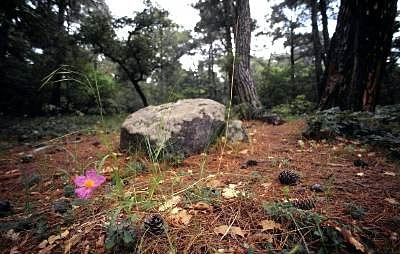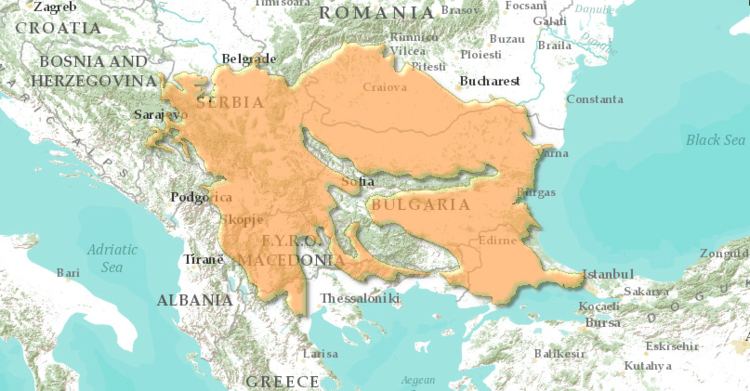Balkan mixed forests
The Balkan mixed forests ecoregion covers much of Bulgaria and bordering countries, excluding the Rodope Mountains. The vegetation of this ecoregion, especially that of the forests and grasslands, is Central European in character.
The diversity of flora and fauna is relatively high compared to the rest of Europe and there are a high number of endemic plant species. Mixed oak forests are characteristic, with Quercus frainetto as the dominant tree species. Oak forests are interspersed with pine, silver fir (Abies alba) and Norway spruce (Picea abies) forests, woodland-pastures, shiblyak and grasslands. High valleys and sheltered slopes feature forests dominated by beech (Fagus sylvatica) and hornbeam (Carpinus orientalis and C. betulus). The region’s herpetofauna is among the most diverse in Europe.
The ecoregion has a good network of protected areas; however, the changing political climate threatens them with fragmentation.
Justification of Ecoregion Delineation
 Soufli Forest Game Refuge, Greece. (Photograph by WWF / Michel Gunther)
Soufli Forest Game Refuge, Greece. (Photograph by WWF / Michel Gunther) This ecoregion is almost equivalent to the DMEER (DMEER 2000) unit of the same name. The ecoregion predominantly corresponds with Bohn et al.’s (2000) sub-Mediterranean-subcontinental thermophilous bitter oak forests and sub-Mediterranean and meso-supra-Mediterranean downy oak forests. The ecoregion does not include the upland vegetation of the Rhodope Mountains (Rhodope montane mixed forests ecoregion) or the sub-Mediterranean and meso-supra-Mediterranean downy oak forests and meso- to thermo-Mediterranean pine forests to the south of the Rhodopes (part of the Aegean & West Turkey sclerophyllous and mixed forest ecoregion).
Additional Information on this Ecoregion
- For a shorter summary of this entry, see the WWF WildWorld profile of this ecoregion.
Further Reading
- Bohn, Udo, Gisela Gollub, and Christoph Hettwer. 2000. Reduced general map of the natural vegetation of Europe. 1:10 million. Bonn-Bad Godesberg 2000.
- Davis, S.D., V.H. Heywood and A.C. Hamilton, editors. 1994. Centres of Plant Diversity. A Guide and Strategy for their Conservation. Volume 1. Europe, Africa, South West Asia and the Middle East. IUCN Publications Unit, Cambridge, U.K. 354 pp.
- Digital Map of European Ecological Regions (DMEER), Version 2000/2005
- Heath, M.F., and M.I. Evans, editors. 2000. Important bird areas in Europe: Priority sites for conservation. 2 vols. BirdLife International, Cambridge, UK. ISBN: 0946888361
- IUCN 2000: The Global Redlist of Species, of the International Union for the Conservation of Nature.
- Ozenda, P. 1994. Végétation du Continent Européen. ISBN: 2603009540
- Wheatley, N. 2000. Where to watch birds in Europe and Russia. Princeton University Press, Princeton, New Jersey. ISBN: 9780691057293
| Disclaimer: This article contains information that was originally published by the World Wildlife Fund. Topic editors and authors for the Encyclopedia of Earth have edited its content and added new information. The use of information from the World Wildlife Fund should not be construed as support for or endorsement by that organization for any new information added by EoE personnel, or for any editing of the original content. |

